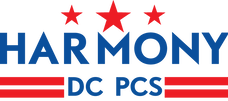Approach
We are known for our project-based, hands-on approach to learning. Our approach is born out of the belief that kids learn best by exploring, discovering, and collaborating in carefully matched small groups. This is equally true in science and math as it is in English literature or art.
This constructivist approach is a lot like tinkering. It encourages students to draw connections between disciplines and build on their previous experience. It gives them the time and space to test their ideas and to figure out how things in the world work. It shows them that you have to fail a lot in order to learn and that failure is at the heart of innovation and invention. This is the way 21st century skills are built.
We believe that our small classrooms and collaborative learning style create an inviting, safe, and purposeful environment where students thrive. Walk into any classroom and you will see children peacefully solving their conflicts with the loving support of our dedicated teachers. Our behavioral expectations are clear and our students happily rise to meet them. Harmony’s friendly and respectful atmosphere is contagious and carries on well after school is over.
Assessment
We use ANet Assessments, Amplify’s DIBELS NEXT and Reading 3D, and NWEA’s MAP assessments to measure student growth and grade-level proficiency in math, reading, and language usage, taking a baseline at the beginning of the year and one at mid-terms. Progress monitoring assessments are used once a month to track student achievement more closely. The resulting data gives our teachers essential information about what each student knows so that they can create tutoring rosters, small groups, and targeted instructional plans to reinforce, develop, or introduce specific skills and concepts.
Robotics
Mission
Our mission is to inspire the kids to be science and technology leaders, by engaging them in exciting mentor-based programs that build science, engineering and technology skills, that inspire innovation, and that foster well-rounded life capabilities including self-confidence, communication, and leadership.
Core Values
The Jr. FLL Core Values are the cornerstones of the robotics program. They are among the fundamental elements that distinguish Jr. FLL from other programs of its kind. By embracing the Core Values, participants learn that friendly competition and mutual gain are not separate goals, and that helping one another is the foundation of teamwork.
- We are a team.
- We do the work to find solutions with guidance from our coaches and mentors.
- We know our coaches and mentors don’t have all the answers; we learn together.
- We honor the spirit of friendly competition.
- What we discover is more important than what we win.
- We share our experiences with others.
- We display Gracious Professionalism® and Coopertition® in everything we do.
- We have FUN!
STEM Education at Harmony
Harmony Public Charter Schools STEM Program
It is the Harmony Public Charter Schools Science, Technology, Engineering, and Math (STEM) Program that aims to prepare each student for higher education with a strong emphasis on Science, Technology, Engineering, and Mathematics. The program provides curriculum, instructional resources, and professional development for STEM teachers. Harmony STEM program is a part of Harmony Public Charter Schools Academic Department that involves a team of curriculum specialists, instructional coaches, and lead teachers in Harmony Public Schools System.
Harmony STEM Program Components
Harmony STEM program has the following components:
- Project Based Learning Program (PBL): Harmony provides curriculum, instructional resources, and PBL training to the teachers. Curriculum specialists and instructional coaches support teachers on site to assist the implementation of PBL.
- Professional Development: Harmony believes that content-focused professional development is a critical need to ensure the quality of teaching science and mathematics. Our STEM training model has two major components; the mastery of content knowledge and delivery of the content with effective instructional practices.
- STEM Culture: The department also provides strategies and resources for schools to build STEM school atmosphere connecting the students to higher education. We design a variety of opportunities for students to take STEM education “beyond the classroom” and see how today’s instruction connects to career and lifelong learning.


